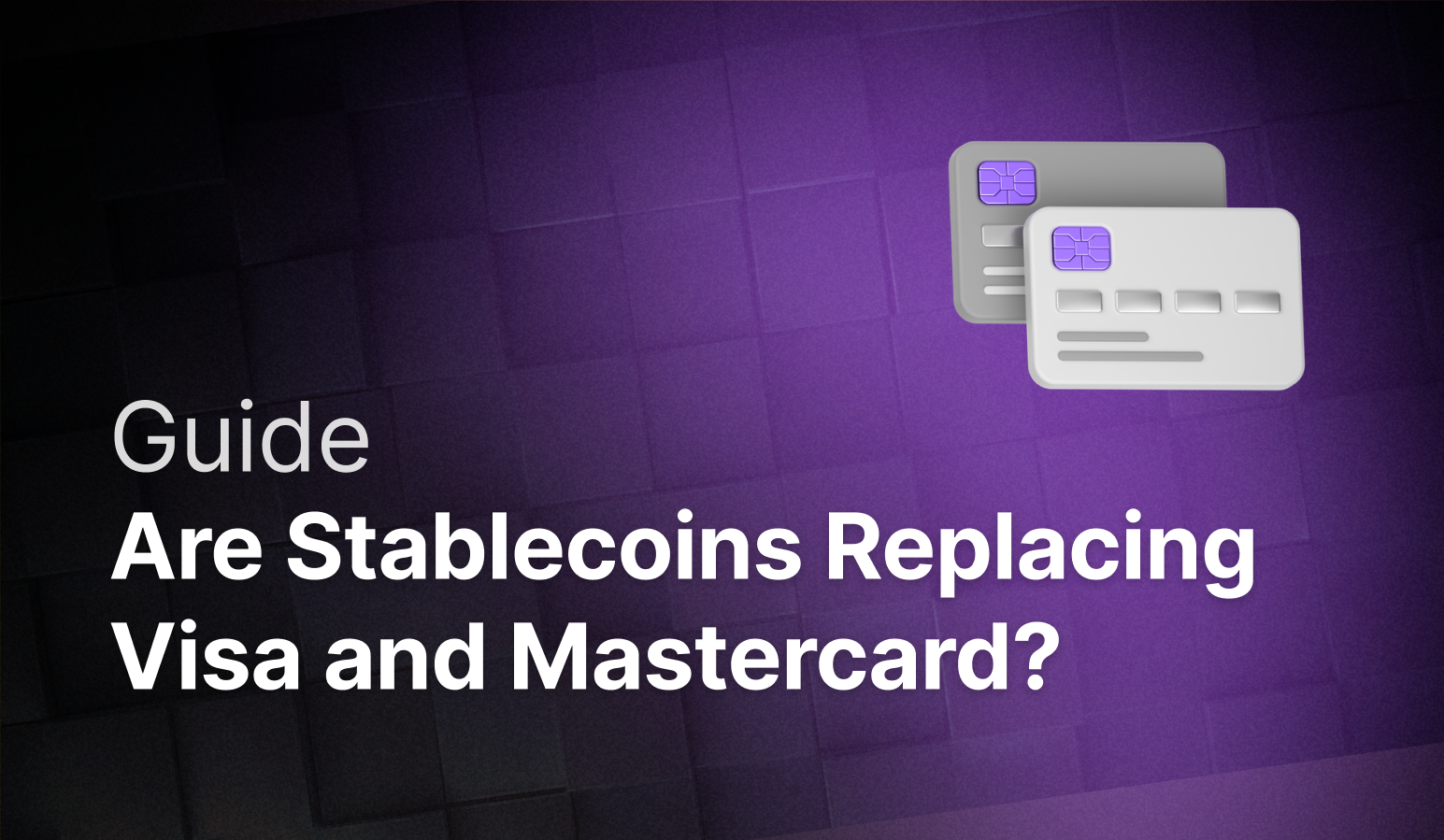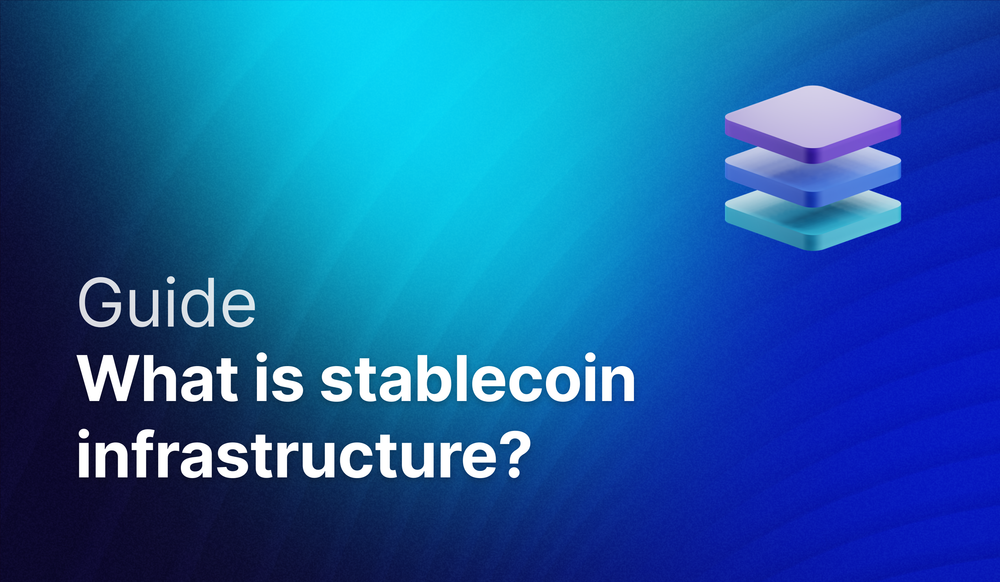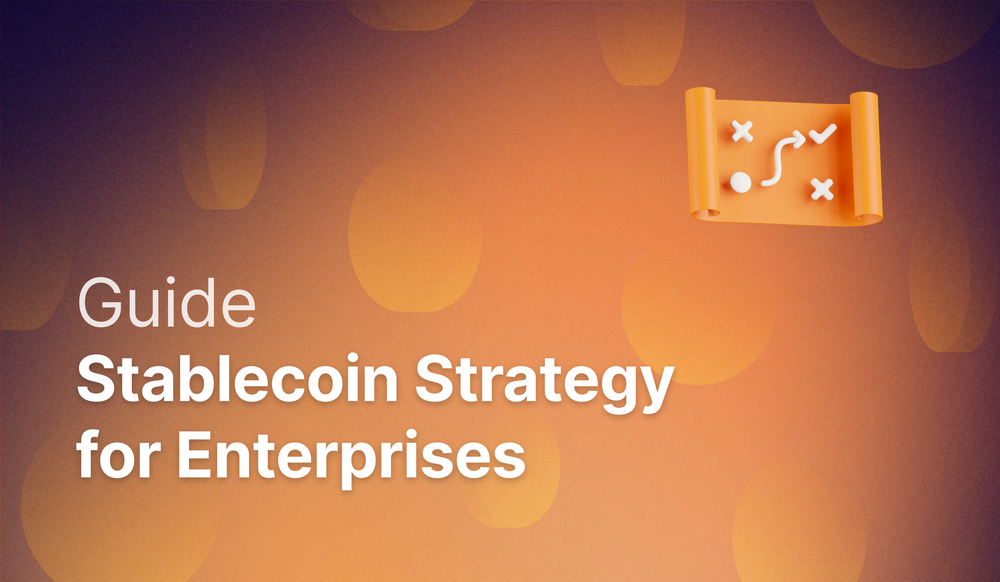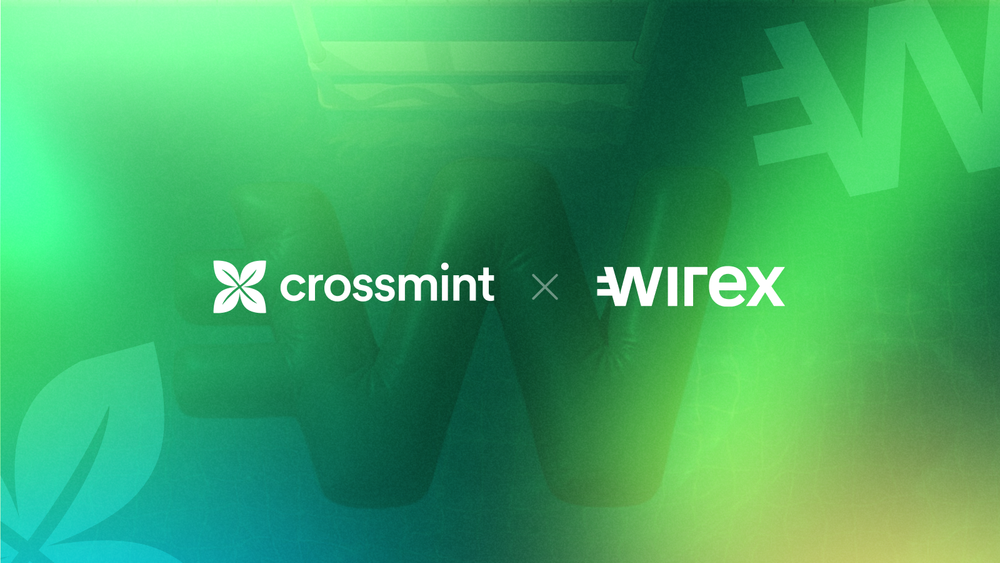People keep having the wrong debate. You see it everywhere: "Will stablecoins kill credit cards?" "Are Visa and Mastercard dead?".
Balaji tweets that stablecoins have "flipped Visa and Mastercard", and suddenly everyone's nodding along comparing $27.6 trillion in stablecoin volume to card payment volume like it's an apples-to-apples race.
It's not. These technologies operate at completely different layers of the financial stack, and conflating them reveals a fundamental misunderstanding of how payments actually work.
The confusion stems from thinking about payments as a monolithic thing when it's actually a sophisticated multi-layer system. When you understand the architecture, the real story emerges: stablecoins are replacing ACH and SWIFT, not Visa and Mastercard. And Visa and Mastercard know this - they're not fighting stablecoins, they're integrating them into their settlement infrastructure.
The misunderstood stack
When you swipe a credit card at a store, here's what actually happens: nothing moves. Well, money doesn't move - data moves. The terminal sends an authorization request through a payment processor to your acquiring bank to Visa's network to your issuing bank. Your bank checks if you have credit available, responds with "approved" or "declined," and that response zips back through the same chain in about two seconds. Visa and Mastercard are operating a real-time messaging network that routes these authorization requests between thousands of banks globally.
But your money? Still sitting in your account. The issuing bank just puts a "hold" on the amount - reserves it so you can't spend it twice. No actual funds transfer has occurred.
The money moves later, during settlement, which happens one to three business days after you swiped your card. Here's the critical part everyone misses: Visa and Mastercard don't move that money. They calculate net settlement positions between banks and send instructions, but the actual funds transfer happens through traditional banking rails - ACH for routine settlements, Fedwire for large urgent transfers, SWIFT for international coordination. These systems are slow (one to five business days for cross-border), expensive ($40-50 per international wire plus correspondent bank fees plus FX markups totaling 4-7% of transaction value), and operate only during banking hours on business days.
This is the architectural separation that matters: payment networks (Visa/Mastercard) handle authorization, routing, and orchestration. Settlement systems (ACH/SWIFT) handle actual money movement between banks. Two entirely different layers.
What Payment Infrastructure Do Stablecoins Replace?
Stablecoins like USDC operate at the settlement layer, not the payment network layer. When you send USDC from one wallet to another, the authorization and settlement happen simultaneously in a single atomic blockchain transaction. There's no separate clearing process, no batch settlement, no correspondent banking chain. Value transfer and finality occur in as los as hundreds of milliseconds, to two minutes, 24/7/365, for transaction costs ranging from less than $0.01 (Solana) to about $0.50 (Ethereum Layer 2s). Compare this to ACH's one-to-three business days and SWIFT's two-to-five day international transfers with their multi-bank fee stack.
Stablecoins are fundamentally competing with ACH and SWIFT as money movement infrastructure. They solve the same problem - moving value between parties - but with radically better performance characteristics. This is why Visa and Mastercard aren't viewing stablecoins as existential threats but as settlement upgrades.
And they're not just talking about it. In July 2025, Visa expanded its stablecoin settlement program to support USDC, PYUSD, USDG, and EURC across four blockchains (Ethereum, Solana, Stellar, Avalanche). They've already settled over $225 million through these channels, enabling issuers and acquirers to fulfill VisaNet settlement obligations in stablecoins. Mastercard announced in June 2025 partnerships with Circle, Paxos, Fiserv, and PayPal, supporting multiple stablecoins across their network. They're explicitly enabling acquiring institutions to settle with merchants using stablecoins, starting with pilots in Eastern Europe, Middle East, and Africa.
This isn't Visa and Mastercard fighting disruption - it's them upgrading their back-end infrastructure. As Visa's head of growth products put it: "While there has been significant progress digitizing the front end of money movement over the past decade, the back end of the world's settlement and money movement infrastructure needs to catch up."
The cost savings are massive. Traditional international wire transfer of $10,000: $40 wire fee, $45 in intermediary bank fees, $300 in FX markup (3%), $15 receiving fee - total $400 (4%) with the recipient getting $9,600. Same transfer via stablecoin: $0.01-1.00 transaction fee, no intermediary fees, minimal FX cost - total under $10 (0.1%) with recipient getting $9,990-9,999. Settlement cost reduction of 97-99% with 100x faster finality.
This enables use cases impossible with traditional rails: micropayments (pay $0.50 for a single article instead of full subscription), real-time cross-border B2B payments (invoice paid in Singapore two minutes after US company initiates transfer, not three days), and programmable money (escrow, milestone payments, automated subscription logic in smart contracts).
What Actually Competes With Visa and Mastercard?
If stablecoins compete with settlement rails, what competes with the payment networks themselves? The answer: products that bundle the payment method, network, consumer interface, and protections into an end-to-end experience - exactly what Visa and Mastercard do.
Base Pay, launched by Coinbase in July 2025, integrates into Shopify (giving millions of merchants access) and enables one-click USDC checkout via crypto wallets. It charges merchants 1% (versus 2-3%+ for cards), settles instantly, and offers planned 1% cashback for consumers. Solana Pay provides QR-code based payments that settle in 400 milliseconds for $0.00025 per transaction, with built-in on-chain loyalty programs. Coinbase Commerce lets merchants accept hundreds of cryptocurrencies with automatic conversion to USDC, charging 1% with instant settlement.
These products operate at the same layer as Visa and Mastercard - they're complete payment solutions handling authorization, network routing, merchant acceptance, and consumer interface. They compete directly on merchant fees (50-100x lower), settlement speed (instant versus days), and global 24/7 availability.
But here's what they sacrifice: all consumer protections. No chargebacks. No dispute resolution. No fraud arbitration. No Zero Liability Policy. Blockchain transactions are cryptographically final—if you send stablecoins to the wrong address or a merchant never ships your product, that money is gone unless the merchant voluntarily refunds you. This isn't a bug; it's a fundamental feature of how blockchains work. Immutability and decentralization require eliminating central authorities who can reverse transactions.
This is why Mastercard's Chief Product Officer correctly noted: "Stablecoins alone do not offer the global acceptance, security, reliability, consumer protections and scale that have made card payments trusted and preferred by billions."
Consumer adoption reflects this. While Visa processes 240+ billion transactions annually across billions of cardholders, crypto-native payment products measure adoption in millions of transactions among tens of millions of crypto wallet holders. The chicken-and-egg problem persists: merchants need consumer adoption, consumers need merchant acceptance, and nobody wants to be the first mover when credit cards already work everywhere with robust protections.
Why Is Comparing Stablecoin Volume to Visa and Mastercard Volume Misleading?
This brings us back to the misleading narrative that stablecoins have "surpassed Visa and Mastercard" with $27.6 trillion in 2024 transaction volume. This comparison fundamentally miscounts what's being measured.
That $27.6 trillion in stablecoin volume includes: - High-frequency trading bots moving the same USDC back and forth thousands of times (CEX.IO reports 70% of volume is bot-driven) - DeFi protocol swaps and liquidity pool transactions - Exchange deposits and withdrawals - The same dollar circulating repeatedly through different addresses - Trading activity, not payment activity
Visa and Mastercard count actual unique merchant-consumer payment transactions for goods and services. An American Banker analysis noted that "90% of current stablecoin volume is for trading in other cryptocurrencies, such as bitcoin. It is not currently used as a general purpose payment tool."
Comparing these numbers is like comparing "total USD banknote circulation through ATM networks" to "credit card payment volume" - different phenomena entirely. And even if you could make them comparable, it wouldn't matter for the original question because they're not competing technologies.
The future: unbundling and AI agents
Understanding the layer distinction reveals the real future of payments. We're headed toward unbundling of financial services. Right now, Visa and Mastercard bundle payment rails, merchant network, fraud protection, dispute resolution, rewards programs, and credit extension into a single integrated offering. Stablecoins enable separating these functions.
Imagine choosing your settlement provider (USDC on Solana for speed, USDT on Ethereum for liquidity), your protection provider (third-party chargeback insurance from specialized crypto insurers), your rewards provider (DeFi protocols offering 10% stablecoin yields, or on-chain loyalty tokens), and your credit provider (undercollateralized lending protocols) - all composed together through smart contracts and wallet interfaces. Visa and Mastercard might become middleware layers coordinating between these specialized providers rather than monolithic bundles.
Even further out: AI agents making autonomous purchase decisions on your behalf with programmable money. Your personal AI doesn't need Visa's fraud protection because it cryptographically verifies every transaction. It doesn't need reward programs because it algorithmically optimizes for your preferences across thousands of options simultaneously. It doesn't batch transactions daily - it transacts in real-time as opportunities arise. Payment networks built for human limitations (two-day settlement, batch processing, manual dispute resolution) become less relevant when autonomous agents operate at machine speed with perfect record-keeping.
But that's the distant future. The near-term reality is convergence, not replacement. Traditional payment processors like Stripe are integrating stablecoin acceptance as an option alongside cards (1.5% fee, settles to merchant in USD). Shopify enables both crypto and card payments through the same checkout flow. Visa and Mastercard are embedding stablecoins into their settlement infrastructure while maintaining their consumer-facing brand, protection systems, and global merchant network.
What Should Payments Companies Know About Building With Stablecoins?
If you're building a payments company, the mental model matters. Don't ask "Will stablecoins replace credit cards?" Ask:
What layer am I operating at? Settlement infrastructure (compete with ACH/SWIFT using stablecoins), payment network (compete with Visa/Mastercard requiring full bundle including protections), or consumer interface (compete on UX, which might use either rails underneath)?
What trade-offs am I making? Lower cost and faster speed versus consumer protections and credit extension? Efficiency versus safety nets?
Who is my customer? B2B transactions between sophisticated parties who can handle irreversible payments? Or consumers who expect chargebacks when merchants fail to deliver?
How do I achieve network effects? Stablecoin settlement can bootstrap immediately through crypto rails. But end-to-end payment networks require coordinated merchant and consumer adoption, which is the hardest problem in payments.
For cross-border B2B payments, supply chain settlements, remittances, and crypto-native businesses, stablecoin infrastructure is already winning. Enterprise treasurers are using them for 24/7 liquidity rebalancing across regions, saving millions in wire fees. Remittance companies like MoneyGram are moving hundreds of billions in remittances over to stablecoins to save fees and grow customer engagement.
For consumer retail payments, the traditional card networks remain dominant and will stay there until someone cracks consumer protections on-chain (decentralized dispute resolution DAOs and zero-knowledge fraud proofs are interesting but nascent) or until regulatory clarity enables crypto-native consumer protection products.
The most likely outcome isn't one technology killing the other. It's Visa and Mastercard settling transactions on stablecoin rails in two minutes instead of two days while maintaining their merchant network, consumer protections, and brand trust. Consumers still swipe cards; merchants still see familiar payment terminals; but the back-end infrastructure runs on blockchains.
That's not a replacement story. That's a complement story. And it's happening right now - Visa's $1 billion annual run rate in stablecoin settlements, Mastercard's partnerships across multiple stablecoin issuers, etc.
The debate about stablecoins versus credit cards misses the point entirely. They're solving different problems at different layers. Once you see the architecture clearly, the confusion disappears - and the real opportunities come into focus.
Crossmint provides enterprise-grade embedded wallets and stablecoin payments infrastructure with the compliance and security your finance team needs. Contact us here to learn how you can cut your cross-border payment costs by up to 97%.







